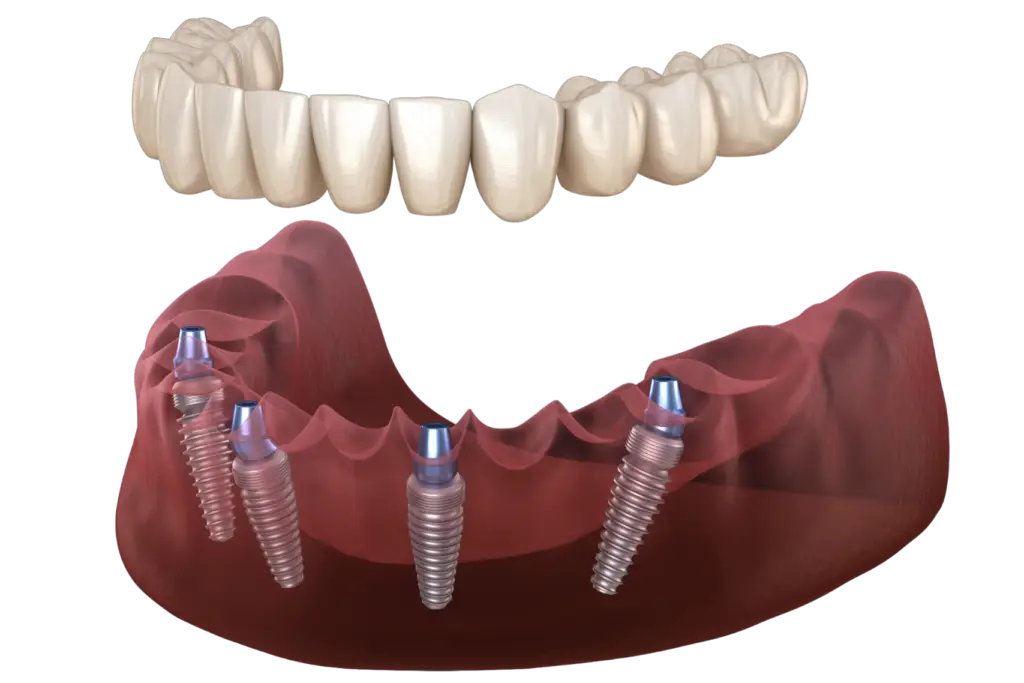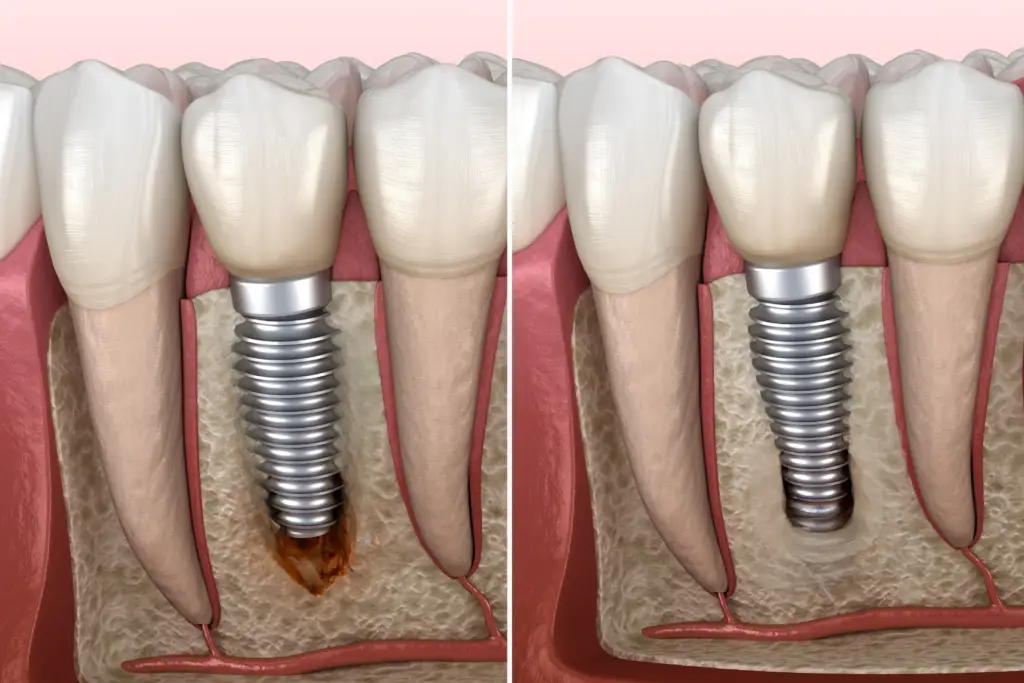What is Osseointegration: A Key to Dental Implants Success
When it comes to dental implants, osseointegration is one of the most critical processes that ensure their success and long-term stability. This term may sound complex, but it simply refers to the biological process that allows a dental implant to become firmly anchored into your jawbone, to “become part of it.”
If you’ve been curious about implant osseointegration or the osseointegration of dental implants, how it works, and why it’s vital for your recovery process, keep reading to discover everything you need to know by the hand of the Certified ZAGA Doctor Takuma Ando, director of the exclusive ZAGA Center Tokyo!
What is Osseointegration?
Osseointegration is the process by which a dental implant—usually made of titanium—fuses with the surrounding bone in your jaw and becomes an osseointegrated implant. In simpler terms, it is the way the bone “heals” around the osseointegrated implant, locking it into place just like a natural tooth root. This process creates a stable, robust foundation for your dental implant, allowing it to function like a natural tooth, supporting crowns, bridges, or dentures and fully restoring your ability to chew and smile confidently without any problems or difficulties. In short, restoring the quality of life that could be decreased by edentulism.
The term “osseointegration” was first used by the Swedish professor Per-Ingvar Brånemark, who discovered that titanium implants, when placed in the bone, would naturally bond with the bone tissue due to the compatibility of this material with the human body, its bones, and soft tissues. This groundbreaking discovery revolutionized the dental industry, making dental implants a permanent and reliable solution for missing teeth and setting titanium as the preferred material for dental implantology procedures.
Why is Osseointegration Important?
Osseointegration is vital for the long-term success of dental implants. Without proper integration into the bone, the implant would lack stability and could cause complications or fail over time, even if the dental implant placement and its surgical procedure were rightly made. Here’s a detailed breakdown of why osseointegration is vital for a long-term success rate of dental implants:
- Stability and Strength: Once the osseointegrated implant is securely fused with the bone, it acts like a natural tooth root, providing the strength needed to support chewing and speaking.
- Durability: Implants that are well-integrated into the bone can last for decades if you take proper care, making them a more permanent solution compared to other tooth replacement options like dentures or bridges.
- Prevention of Bone Loss: One of the lesser-known benefits of osseointegration of dental implants is that it helps prevent the jawbone from shrinking, which commonly happens when teeth are missing.
- Aesthetic Benefits: Because the implant is securely fused with the bone, it allows for a natural-looking tooth replacement that blends seamlessly with the rest of your teeth.
When Does Osseointegration Occur?

Osseointegration begins right after the dentist places the dental implant in the jawbone, but full integration takes time. Generally, it can take between 3 to 6 months for complete osseointegration, depending on individual healing factors .
This is why many dental implants, including All-on-4 and All-on-6, are placed in stages—after the implants are initially placed, patients typically need to wait several months for the bone to fuse before the final prosthesis is attached fully. In the time osseointegration occurs, the patient will receive a temporary prosthesis, which is usually lighter than the definitive ones and doesn’t interfere while the implant and the bone are fusing.
How Does Osseointegration Work?
Osseointegration happens through a series of natural biological steps. Here’s a simplified breakdown:
- Implant Placement: The implant, typically made from titanium, is surgically placed into the jawbone. Titanium is used because of its excellent biocompatibility, meaning the body doesn’t reject it.
- Healing Begins: Starts immediately after the implant is placed. Blood clots form around the implant, and osteoblasts (bone-forming cells) start to build new bone tissue around it.
- Bone Formation: Over several weeks, the new bone tissue grows around the implant. This new bone gradually hardens, anchoring the osseointegrated implant firmly in place.
- Bone Remodeling: Even after the implant has integrated with the bone, the body continues to remodel and strengthen the bone around the osseointegrated implant, ensuring it remains secure for many years.
How All-on-4 and All-on-6 Take Advantage of Osseointegration

"All-on-4 and All-on-6 are beneficial treatments that can improve the patient's initial condition in a very short time."
Dr. Takuma Ando, Smile24h Expert Doctor in Tokio, Japan
The All-on-4 and All-on-6 techniques have revolutionized full-arch restorations by utilizing the benefits of osseointegration. In these methods, four or six implants are placed strategically to support a complete arch of teeth, allowing patients with significant tooth loss to regain function and aesthetics and become, with time, osseointegrated implants.
Why are these methods so effective?
- Fewer implants, more support: With only four or six implants, a full arch of teeth can be supported due to the strength of osseointegration. These techniques optimize the use of available bone, even in cases where bone density is compromised.
- Long-lasting solution: Just like traditional implants, All-on-4 and All-on-6 procedures benefit from the bone’s natural ability to fuse with the titanium implants, ensuring a stable and durable result that can last for decades.
- Prevention of bone resorption: When osseointegrated implants are placed, they help to preserve the jawbone and prevent the typical bone loss that occurs after tooth extraction. This benefit extends to patients receiving All-on-4 or All-on-6, making these options even more appealing for long-term oral health.
Immediate Loading with All-on-4 and All-on-6
A significant advantage of All-on-4 and All-on-6 is the ability to perform immediate loading, where a temporary prosthesis can be placed on the day of the surgery. But how is this possible?
- Strategic Implant Placement: In All-on-4 and All-on-6 procedures, implants are often placed at an angle to maximize contact with the available bone. This strategic positioning creates the necessary initial stability, which is essential for supporting a temporary prosthesis immediately.
- Primary Stability: Achieving immediate loading depends on the initial stability of the osseointegrated implants, which is ensured by careful surgical technique. Even though osseointegration takes months to complete fully, the stability of the implants is strong enough to hold a prosthesis right away.
- Bone Quality: The areas in the jaw where the implants are placed, particularly in the front, tend to have higher bone density, allowing for a firm hold and immediate functionality.
- Immediate loading allows patients to leave the dental office with a new smile and full function on the same day of surgery. It is a transformative experience, offering immediate improvement in chewing, speaking, and aesthetics without having to wait months for the final prosthesis.
Who Oversees the Osseointegration Process?
The process of dental implant osseointegration is overseen by dental professionals, typically oral surgeons or implantologists, who have specialized training in placing dental implants. These professionals have the expertise to ensure the implant is positioned correctly, allowing osseointegration to occur smoothly. All-on-4 and All-on-6 techniques are often performed by highly skilled specialists who understand how to optimize implant placement for full arch restorations.
To always ensure the best outcomes and minimally invasive approaches, we recommend choosing a Certified ZAGA Center. As globally recognized experts in dental implantology, ZAGA Doctors’ work aligns with the ZAGA Philosophy and the ZAGA Approach, which is defined by its “patient-first” approach and addresses each patient’s concrete needs and expectations.

What Factors Can Affect Osseointegration?
While osseointegration has a high success rate, several factors can influence how well the process works:
- Bone Health: Patients with adequate bone density generally experience better osseointegration. In cases of severe bone loss, procedures like bone grafting or zygomatic implants may be required to ensure the implant has enough support.
- Smoking: Smoking can slow down healing and reduce blood flow to the bone, increasing the risk of implant failure.
- Diabetes: Uncontrolled diabetes can affect healing and osseointegration, so patients with diabetes need to ensure their condition is well-managed before undergoing implant surgery.
How do I know if my implant is osseointegrated?
Only a dentist can confirm if your implant has fully osseointegrated. They will assess it through clinical examinations and possibly X-rays to check for bone growth around the implant. Symptoms like pain, swelling, or implant mobility may suggest incomplete osseointegration.
In a Nutshell
Osseointegration is the primary key to a successful dental implant procedure. Allowing the osseointegrated implant to fuse with the jawbone correctly ensures stability, functionality, and longevity—qualities that make osseointegrated implants one of the most effective solutions for tooth replacement.
Whether you’re considering an implant, All-on-4, or All-on-6, knowing how osseointegration and immediate loading work can help you make informed decisions about your dental health. If you’re ready to restore your smile with osseointegrated implants, consult an expert to see if you’re a good candidate for this life-changing procedure.

Dr. Ando is the head of ZAGA Center Tokyo and ORC Implant Clinic. He is the son of Prof. Masami Ando, a famous zygomatic implant surgeon, known as the fastest zygomatic implants surgeon in the world.
Dr. Takuma Ando has been a dentist for over 14 years, specializing in dental implants since graduating. Dr. Ando is an expert in Full Arch and Zygomatic Implants treatments.
He follows in his father’s footsteps as a top dentist for dental implants in Tokyo. Dr. Ando is a certified ZAGA Doctor in Tokyo, providing great care to patients. He is also a specialist in the Japanese Society of Implantology and teaches at Showa University. He believes in continuous learning and staying current with new techniques.
Still have questions? Find your nearest specialist and discover how we can help improve your quality of life with expert care

